October 7, 2024

In the year
since Israel declared its war on Gaza, at least 42,000 Palestinians have been
killed, a little over half of them women and children.
According to
Palestinian health officials, the death toll is likely to be far higher with
thousands of people believed to buried under rubble or in areas inaccessible to
medical teams.
The conflict
erupted after the 7 October 2023 attacks on southern Israel by the Palestinian
group Hamas, which, according to Israeli officials, killed 1,139 people and
took around 250 captive.
Here Israeli
fighter jets can be seen bombing a high-rise residential building in Gaza City
on 7 October 2023 (MEE/Mohammed al-Hajjar).

The colleagues
of three slain Palestinian journalists, Said al-Taweel, Mohammed Sobboh and
Hisham Nawajhah, raise a blood-soaked press jacket at their funeral in Gaza
City on 10 October 2023.
According to
Gaza's Government Media Office, the number of journalists killed since the war
began is at least 175. Meanwhile, the Committee to Protect Journalists (CPJ)
says at least 128 journalists and media workers have been killed (MEE/Mohammed
al-Hajjar).
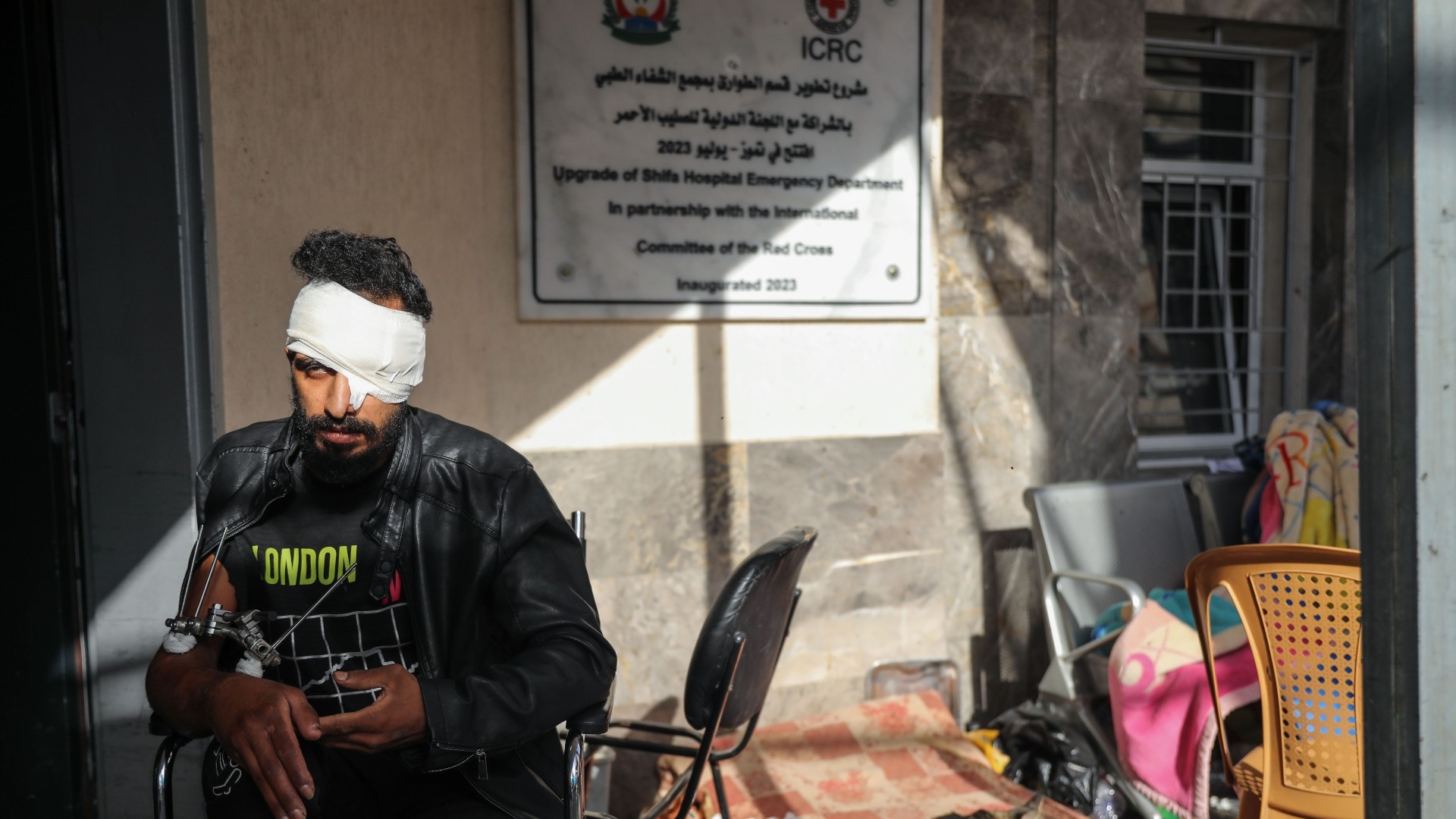
According to
Palestinian officials, more than 96,000 Palestinians have been injured, with
Unicef estimating that at least 1,000 children have become amputees.
A wounded
Palestinian man sits outside the emergency department of al-Shifa hospital on
24 November 2023 (MEE/Mohammed al-Hajjar).
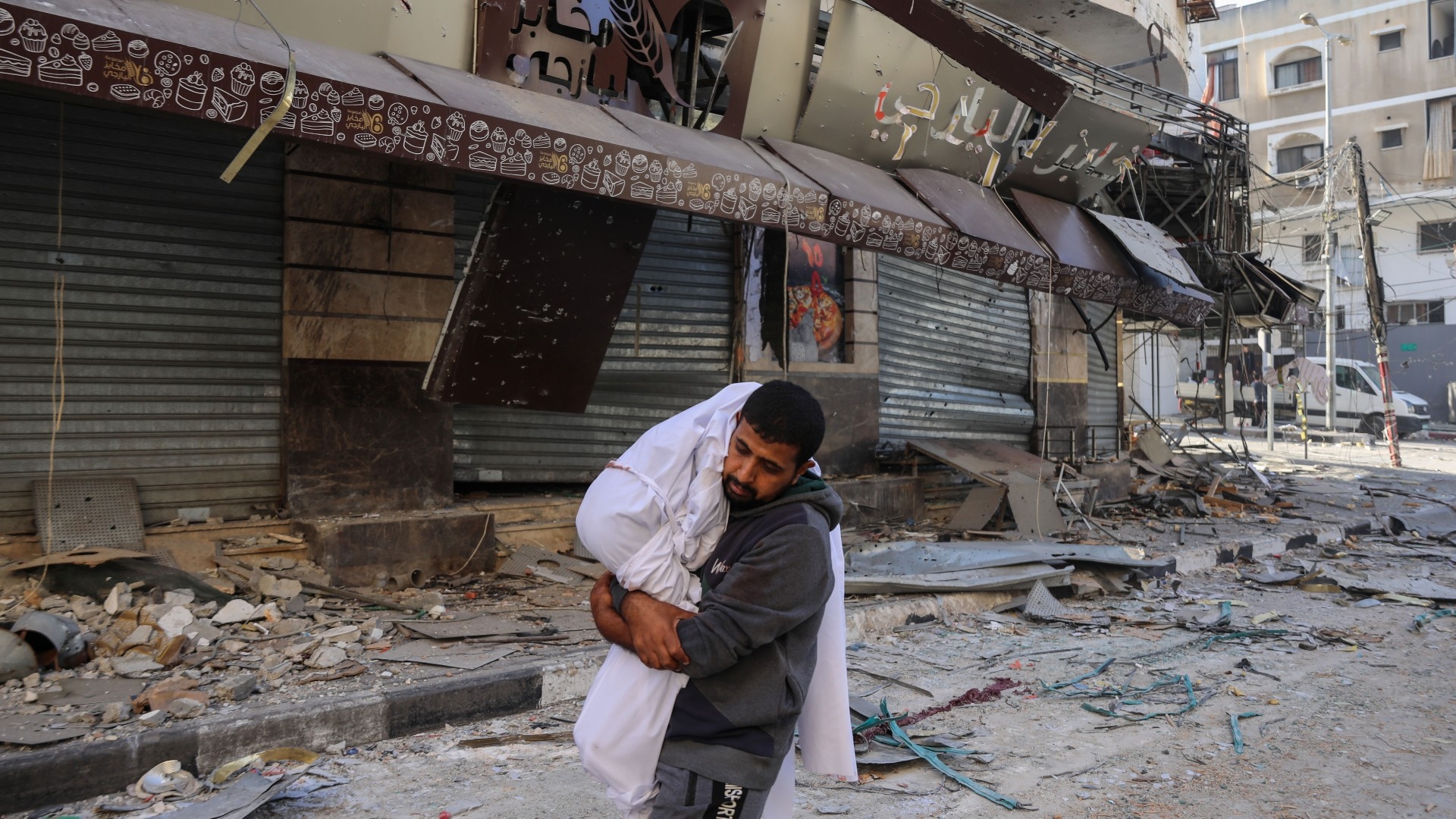
Conservative
estimates suggest that at least 13,000 children have been killed over the last
12 months. Meanwhile, the charity Save the Children says as many as 21,000
children are either missing or separated from their families.
This photograph
shows a Palestinian man carrying the body of a dead child in Gaza City on 24
November 2023 (MEE/Mohammed al-Hajjar).

Since the war
erupted, starving cats and dogs have been seen eating the remains of killed
Palestinians.
The camera
captures a cat amid the rubble of a road in Gaza City on 15 December 2023
(MEE/Mohammed al-Hajjar).

Almost all
Palestinian graveyards across Gaza have been destroyed or ransacked by Israeli
forces since the war began.
As a result,
families have been seen burying their dead wherever possible: in backyards,
parking lots and along roadsides.
Here a
Palestinian boy hugs the grave of a family member killed in an Israeli bombing
in Gaza City on 31 December 2023 (MEE/Mohammed al-Hajjar).

During the first
six months of war, Israeli forces destroyed around 60 percent of the Strip's
cultural heritage sites.
A section of the
Basha Palace Museum in Gaza City, which dates to the 13th century, can be seen
here in ruins after Israeli bombing on 12 January 2024 (MEE/Mohammed
al-Hajjar).
In the past
year, around 90 percent of Gaza's 2.3 million population has been displaced,
most of them multiple times, according to estimates by the United Nations.
A girl is
pictured next to a bombed-out car, which has been turned into a makeshift
shelter, in Gaza City on 21 January 2024 (MEE/Mohammed al-Hajjar).
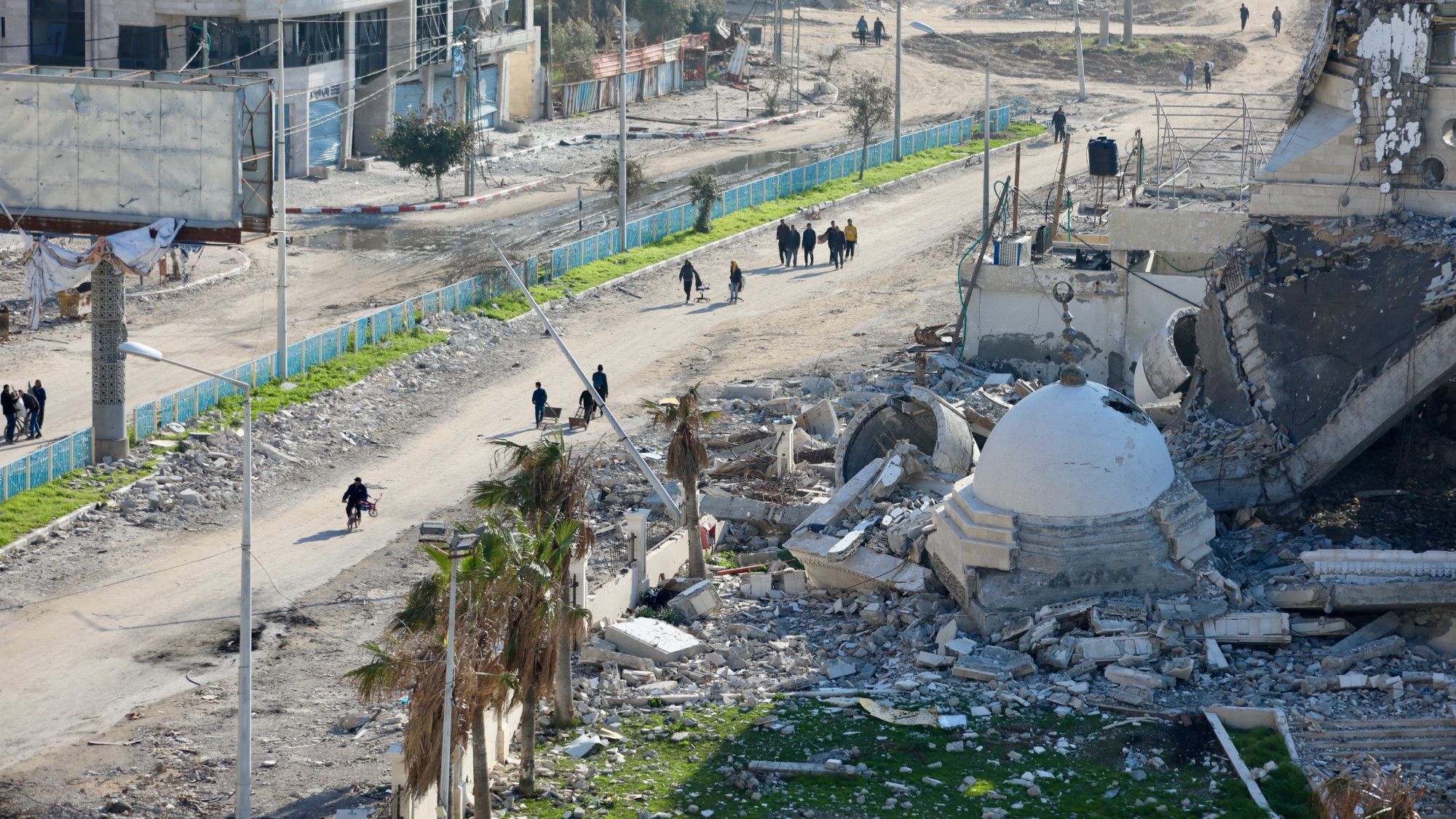
According to
local authorities, at least 814 mosques and three churches have been destroyed
by Israel in Gaza.
The grand Al
Hassaina Mosque in Gaza City, which overlooked Gaza's Mediterranean coast, can
be seen here in ruins after Israeli air strikes on 20 February 2024
(MEE/Mohammed al-Hajjar).

In this photo,
the Port of Gaza is reduced to rubble after repeated Israeli air attacks.
Most of the
port's boats and fishing equipment have been destroyed, with authorities saying
almost 98 percent of the fishing sector has been affected by Israeli attacks
(MEE/Mohammed al-Hajjar).

According to the
Ministry of Health, at least 34 people, many of them children, have died from
severe malnutrition since 7 October 2023.
A girl holds up
her empty food bowl in Gaza City on 3 March 2024 (MEE/Mohammed al-Hajjar).

Around 90
percent of children in Gaza lack nutrition and face "severe" threats
to their "survival, growth and development", according to the United
Nations children's agency, Unicef.
A malnourished
child can be seen here receiving treatment at the Kamal Adwan hospital in
northern Gaza on 6 March 2024 (MEE/Mohammed al-Hajjar).
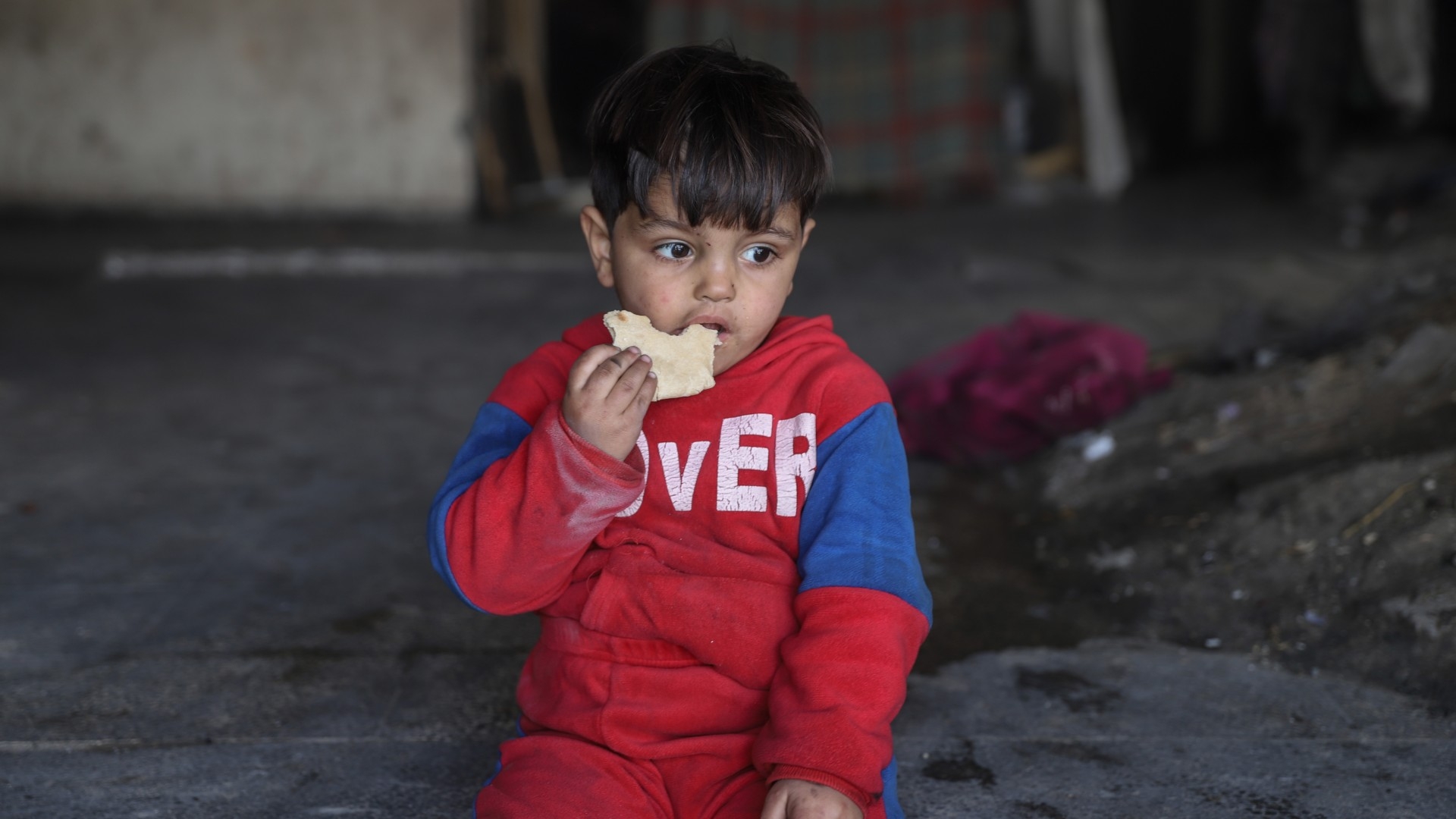
According to the
UN, a staggering nine out of 10 children are not getting enough nutrients from
the food they are eating to ensure their healthy growth and development.
During a lull in
Israeli air strikes, a Palestinian child can be seen eating bread in Gaza City
on 7 April 2024 (MEE/Mohammed al-Hajjar).
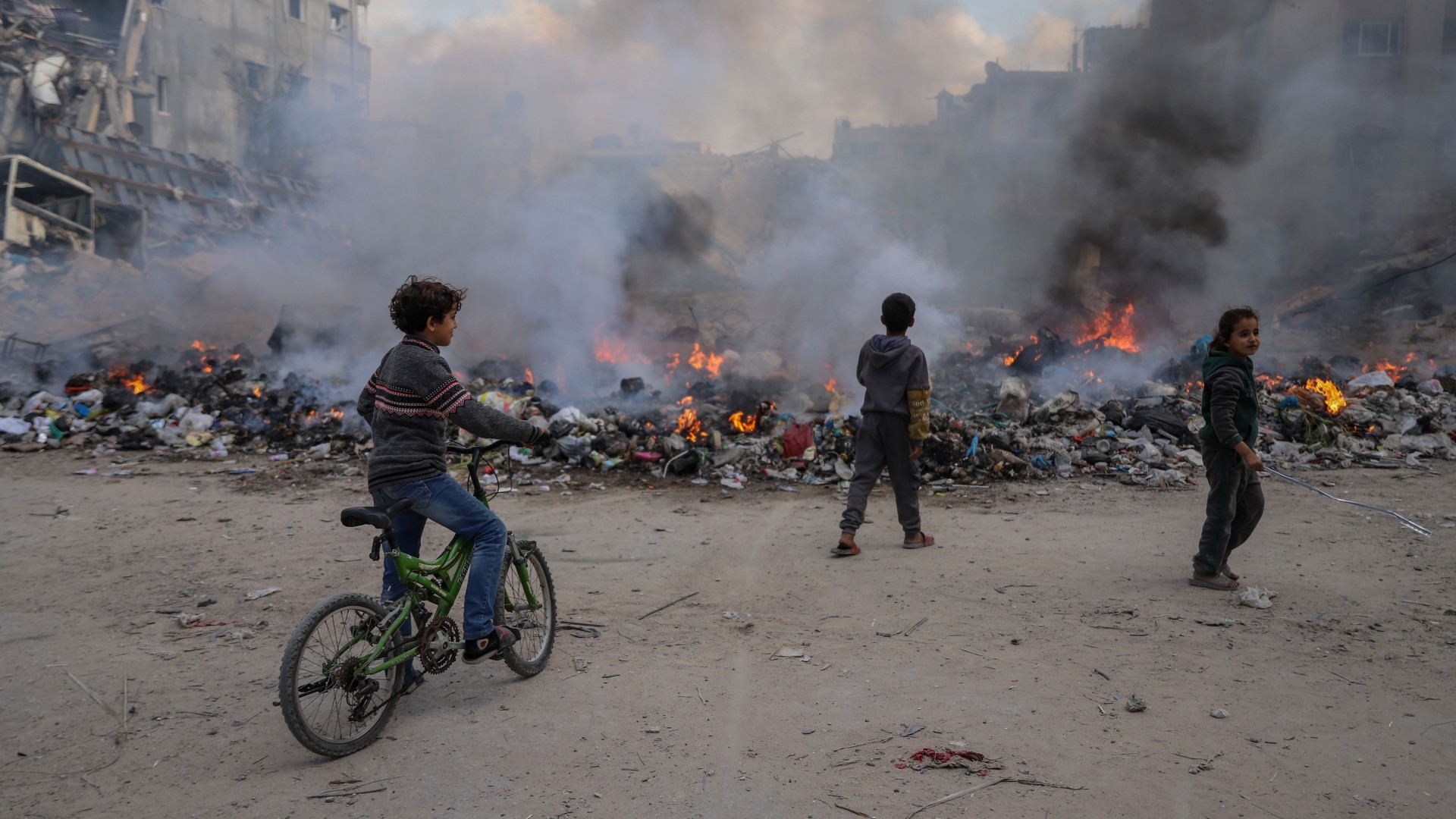
Gaza has been
threatened by plague and deadly diseases as garbage fills the streets.
In this
photograph, a group of children play near a waste landfill site in Gaza City on
7 April 2024 (MEE/Mohammed al-Hajjar).

Clearing the
rubble from Israel's bombing campaign could take 15 years and cost between
$500m and $600m, according to the UN.
A Palestinian
boy sits atop the rubble of a destroyed building in the Jabalia refugee camp on
30 May 2024 (MEE/Enas Rami).

Since the war
erupted, Israel has persistently targeted Unrwa, asserting the unfounded
argument that the agency is the UN arm of Hamas.
Here the charred
hulk of an Unrwa clinic in the Jabalia refugee camp can be seen after it was
torched by Israeli forces before they left on 30 May 2024 (MEE/Enas Rami).

Funeral prayers
have been held multiple times a day for Palestinians killed in Israeli attacks
since 7 October 2023.
In this photo,
prayers are held for those killed in an attack on central Gaza on 8 June 2024
(MEE/Mohammed al-Hajjar).

Relentless air
strikes, power outages and shortages of essential supplies have pushed nearly
every hospital in the beleaguered northern Gaza Strip out of service.
Wounded
Palestinians are seen here being treated at Al-Aqsa Martyrs hospital in central
Gaza on 8 June 2024 (MEE/Mohammed al-Hajjar).

The targeted
killings of journalists would have decreased globally this year were it not for
the ongoing war on Gaza.
Rescuers search
a journalist's tent in the compound of the al-Aqsa Martyrs Hospital in Deir
al-Balah following an Israeli strike on 22 July 2024 (MEE/Mohammed al-Hajjar).

Israel has
bombed nearly 85 percent of Gaza's schools in the past year, killing hundreds
of displaced Palestinians, including children.
Following a
deadly Israeli strike on a school in Deir al-Balah on 27 July 2024,
Palestinians are pictured mourning
(Mohammed al-Hajjar/MEE).

Ibrahim Salem
spent eight months at the now infamous Sde Teiman torture facility, where rape,
electrocution and beatings were routine.
He was released
on 1 August 2024, and is now in Deir al-Balah, central Gaza (MEE/Mohammed
al-Hajjar).

Several
Palestinians released from the notorious Sde Teiman torture facility have
reported being subject to physical and psychological abuse whilst in captivity.
Detainees are
kept blindfolded at all times and transgressions an result in beatings from the
guards.
Ibrahim Salem,
pictured, who was released on 1 August 2024 tells Middle East Eye about the
abuse, including rape and electrocutions, he suffered (MEE/Mohammed al-Hajjar).

Palestinian
children are losing yet another academic year due to the ongoing Israeli war in
the enclave.
In this photo
from 4 September 2024, Afnan al-Shenbari, 12, shows how her backpack was
replaced with clothes as she and her family fled their home in northern Gaza
(MEE/Mohammed al-Hajjar).

More than 140
Unrwa schools have come under attack since the 7 October attacks, with the
majority of the air strikes taking place whilst Palestinians were seeking
refuge in them under the UN flag.
Seven-year-old
Ibrahim Mubayyad poses for a photo with his grandparents and sister in an Unrwa
school in Deir al-Balah (MEE/Mohammed al-Hajjar).

According to a
damage assessment from Unosat, around 163,778 structures in Gaza have been
damaged by Israeli air strikes, with 78 percent either completely destroyed or
severely or moderately damaged.
A boy is
pictured amid the rubble of al-Aqsa Mosque in Deir al-Balah, on 6 October 2024
(MEE/Mohammed al-Hajjar).

For the past
year, Israeli forces have repeatedly desecrated religious sites and burned
sacred texts.
In this
photograph, a pile of Qurans lies among the debris of al-Aqsa Mosque in Deir
al-Balah, on 6 October 2024 (MEE/Mohammed al-Hajjar).

No comments:
Post a Comment